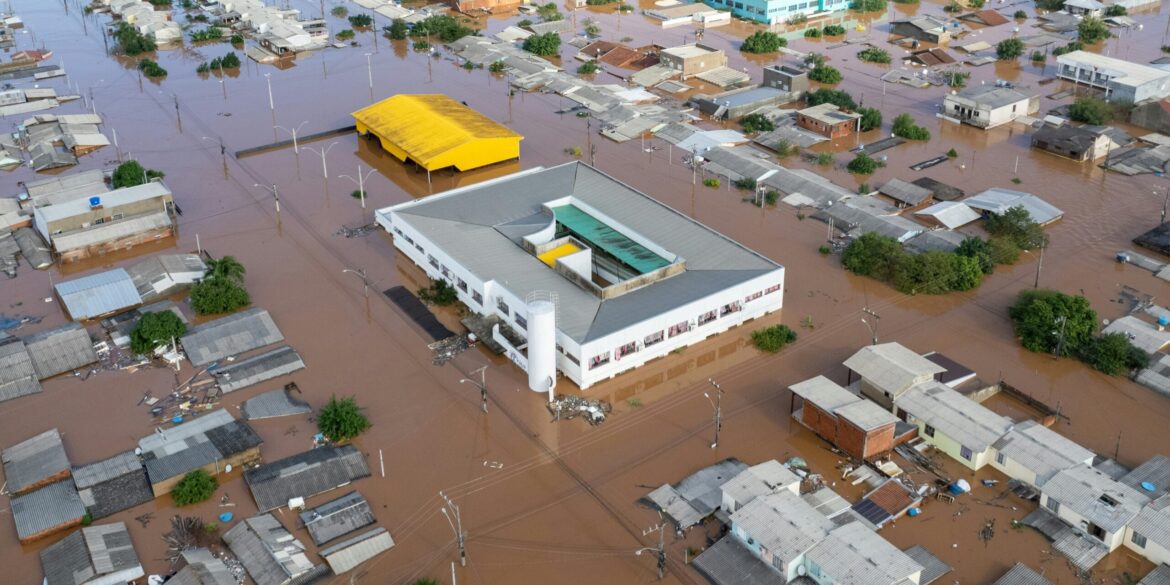The catastrophic floods that swept through central Texas over the Fourth of July weekend have left at least 104 people dead, including 27 children, and dozens more missing. The disaster, centered around the Guadalupe River in Kerr County, has become one of the deadliest U.S. flood events in decades, underscoring the urgent need for comprehensive climate action and infrastructure resilience.
The floods were triggered by intense rainfall—over 15 inches in some areas—caused by a combination of lingering moisture from Tropical Storm Barry and warm, moist air. The Texas Hill Country, known as “flash flood alley” due to its steep terrain and minimal vegetation, exacerbated the situation, leading to rapid water runoff and flooding. The Guadalupe River surged more than 30 feet, overwhelming communities and infrastructure.
Camp Mystic, a Christian girls’ summer camp near Kerrville, was particularly hard-hit. At least 27 campers and counselors lost their lives, and 11 girls and one counselor remain missing. The tragedy has drawn national attention, highlighting the vulnerability of children in extreme weather events and raising questions about the adequacy of disaster preparedness measures.
Despite the National Weather Service issuing flood warnings hours before the disaster, local officials in Kerr County have faced criticism for their response. The county, which has experienced over 100 flood events since 1960, lacked a comprehensive flood warning system. A previous attempt to secure FEMA funding for such a system was unsuccessful, and proposed sirens were deemed too costly. The absence of timely alerts left many residents and visitors unaware of the impending danger.
The National Weather Service’s forecasting capabilities have also come under scrutiny. Recent staffing cuts, including the departure of a veteran meteorologist, may have impacted the accuracy and timeliness of warnings. Additionally, cellular and Wi-Fi issues in rural areas hindered the dissemination of alerts, leaving many without critical information.
Experts agree that climate change played a significant role in the severity of the floods. Warmer air holds more moisture, increasing the likelihood of intense rainfall. The combination of climate change, urbanization, and aging infrastructure has created a perfect storm for disasters like the one in Texas.
Dr. Martina Egedusevic, an Impact Fellow in Green Futures at the University of Exeter, emphasized the need for systemic approaches to flood resilience. “Nature-based solutions such as wetland restoration, reforestation, and sustainable urban drainage systems can complement engineering infrastructure by slowing runoff and increasing infiltration,” she said. “However, each region has its own hydrological and social context, so local knowledge and inclusive planning are essential.”
The disaster has reignited debates over climate policy and infrastructure investment. Critics argue that under President Donald Trump’s administration, budget cuts and the dismantling of key federal agencies like FEMA and the National Weather Service have compromised the nation’s ability to predict and respond to weather-related disasters. The erosion of emergency management infrastructure could render the U.S. dangerously unprepared for future events.
In Texas, the state legislature recently killed House Bill 13, which aimed to create a statewide emergency response council. Local and state officials have been accused of ignoring alerts issued by both government and private weather services, including AccuWeather. The lack of leadership and transparency from FEMA, now led by an underqualified appointee, has further fueled public outrage.
In the wake of the floods, there is a growing consensus on the need for immediate action to enhance infrastructure resilience and disaster preparedness. Lieutenant Governor Dan Patrick has pledged state funding for a warning system if local authorities cannot afford it. Meanwhile, public calls for implementing real-time warning systems have intensified, with online petitions gaining momentum.
Investors and policymakers are also recognizing the economic imperative of climate resilience. The recent disaster has exposed the fragility of existing infrastructure and highlighted the demand for public-private funding in flood mitigation and emergency response systems. Companies specializing in grid resilience, flood control technologies, and early warning systems are seeing increased interest as communities seek to prevent future tragedies.
The Texas floods serve as a stark reminder of the consequences of inaction in the face of climate change. As extreme weather events become more frequent and severe, the need for comprehensive climate action and infrastructure investment becomes increasingly urgent. By embracing nature-based solutions, enhancing forecasting capabilities, and prioritizing community engagement, Texas and the nation can work towards a more resilient future.

